Mary: and the Hypostatic Union
“The Virgin is truly the Queen of Heaven and of all spirits: through her we can obtain everything by invoking her, her Son refusing nothing to her, which was heralded by the miracle at the wedding of Cana made at her request, and she has accompanied it in all its temporal course of reconciliation operations.”
Jean-Jacques du Roy d’Hauterive (quoted from The Lessons of Lyons, 5 August 1775)
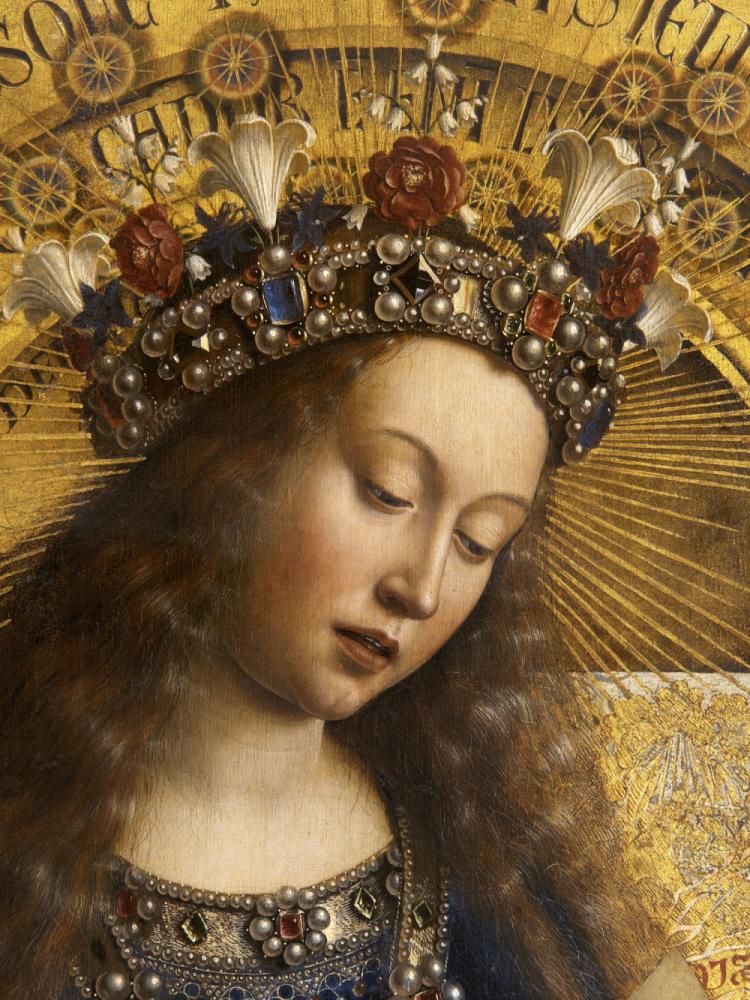 What really sets humanity apart from the animal kingdom is not intellect, reason, spirituality or even will, but the capacity to reflect on suffering. It is the curse of Adam, the pain of Job and the consequence of sentient life. The attachment to the fantasy of the perfect life, having control over everything, financial freedom, love, attention and good health - essentially the freedom from anxiety that comes with security - creates the conditions for, and becomes the root cause of, all personal and collective misery. It is the cankerous rot that spreads throughout our species, and which ties us to mental slavery like no other power imaginable. Yet selfishness is the key evolutionary trait, without which the animal part of our being would never have come to first dominate (then destroy) our environment. Thus, for example, the practice of suicide is an aberration of nature (but not of our free-will), since it runs contrary to that procreative instinct devouring our planet and which destroys the security of our neighbours. Indeed, it is a rejection of suffering and a revolt against the world as it is, and a force which drives one person to death by suicide every eleven minutes in the United States alone.
What really sets humanity apart from the animal kingdom is not intellect, reason, spirituality or even will, but the capacity to reflect on suffering. It is the curse of Adam, the pain of Job and the consequence of sentient life. The attachment to the fantasy of the perfect life, having control over everything, financial freedom, love, attention and good health - essentially the freedom from anxiety that comes with security - creates the conditions for, and becomes the root cause of, all personal and collective misery. It is the cankerous rot that spreads throughout our species, and which ties us to mental slavery like no other power imaginable. Yet selfishness is the key evolutionary trait, without which the animal part of our being would never have come to first dominate (then destroy) our environment. Thus, for example, the practice of suicide is an aberration of nature (but not of our free-will), since it runs contrary to that procreative instinct devouring our planet and which destroys the security of our neighbours. Indeed, it is a rejection of suffering and a revolt against the world as it is, and a force which drives one person to death by suicide every eleven minutes in the United States alone.
What has all this doom and gloom to do with the theme of this article, I hear you ask? Much, because Mary represents the totality of humanity on many levels: not only in her body, mind, soul and spirit, but also in the fear, depth of despair and joy she experienced as a mother. From the massacre of the innocents, the flight to Egypt, and standing at the foot of the cross, she had and saw it all. Mary is not only a metaphysical object representing the human spirit at the side of God; she is also a complete human being., not a hybrid human-divine entity. In this sense prayers offered to her are essentially self-petition; an appeal to our higher consciousness.
The idea of Mary or any person being born without imperfection seems fantastical to us. After all, anxiety is the motivating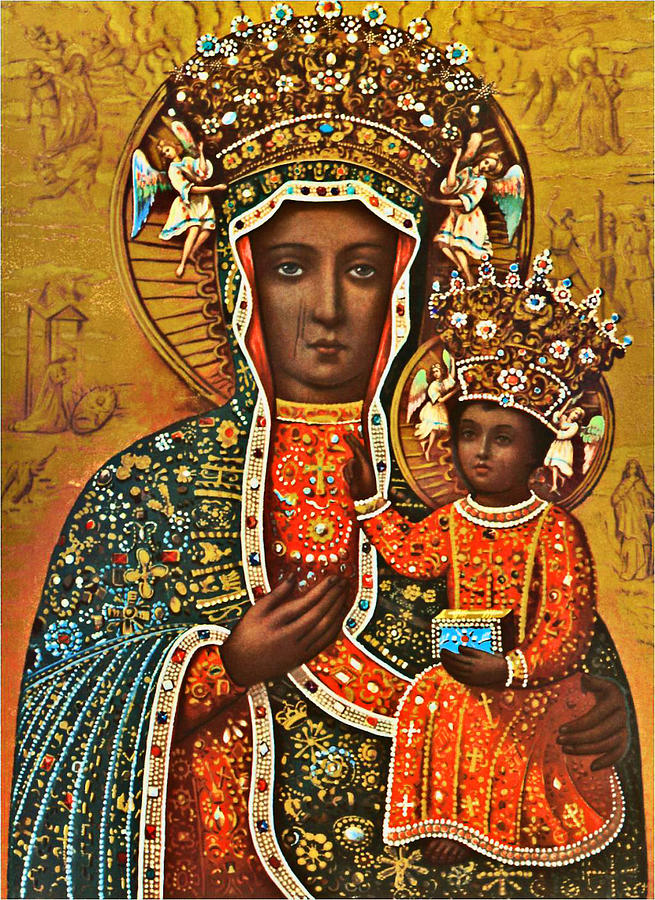 force behind the sense of need that either motivates or destroys us, and which underpins the sense of need that compels humanity to murder, steal, lie, and feel jealousy. It is the cause of all war, and has been the facilitator of the deaths of countless tens of millions. For St. Augustine of Hippo, these characteristics became part and parcel of man’s animal nature as a consequence of Adam’s Fall into material elemental form. Prior to that Adam enjoyed a glorified, spiritual form or body which vibrated on a much higher level than the base elements of the earth into which he fell. Augustine came to see Adam’s pride – that act which led him to rebel against God – as the “original sin.” To make sense of suffering, anxiety, all vices, ageing and death, Augustine believed that Adam’s sin was transmitted from generation to generation through “concupiscence”, beginning in the act of sexual intercourse.
force behind the sense of need that either motivates or destroys us, and which underpins the sense of need that compels humanity to murder, steal, lie, and feel jealousy. It is the cause of all war, and has been the facilitator of the deaths of countless tens of millions. For St. Augustine of Hippo, these characteristics became part and parcel of man’s animal nature as a consequence of Adam’s Fall into material elemental form. Prior to that Adam enjoyed a glorified, spiritual form or body which vibrated on a much higher level than the base elements of the earth into which he fell. Augustine came to see Adam’s pride – that act which led him to rebel against God – as the “original sin.” To make sense of suffering, anxiety, all vices, ageing and death, Augustine believed that Adam’s sin was transmitted from generation to generation through “concupiscence”, beginning in the act of sexual intercourse.
Yet the Jews taught that children enter the world at birth in a sinless state, and sin occurs almost immediately thereafter. It is, as it were, part of the human condition and not specifically a consequence of transmission from Adam. True, sin was due to the consequences of the Fall, but these were environmental and physical conditions caused by it, and not inherited as such. Put another way, for the Jews sin was a state of estrangement from God occurring as our will developed.
![]() The Christian dogma of Mary’s immaculate conception and birth without sin is therefore a normal, and natural aspect of the Jewish way of looking at human reproduction. In this it differs from the Christian doctrine of original sin. The explanation for the difference, however, lies in Mary being the Second Eve (just as Jesus was the Second Adam). This is of particular interest to esoteric Christians and has been preserved in the largely ‘underground’ mystical tradition within the Church for centuries, since it concerns itself with the reconciliation and restoration of both branches of humanity - female and male - just as much as it does about the salvation of humanity through the Incarnating Logos made flesh. There is a danger such doctrine could undermine the cross, and for that reason it has been downplayed by the Church, particularly within the Protestant traditions since the Reformation.
The Christian dogma of Mary’s immaculate conception and birth without sin is therefore a normal, and natural aspect of the Jewish way of looking at human reproduction. In this it differs from the Christian doctrine of original sin. The explanation for the difference, however, lies in Mary being the Second Eve (just as Jesus was the Second Adam). This is of particular interest to esoteric Christians and has been preserved in the largely ‘underground’ mystical tradition within the Church for centuries, since it concerns itself with the reconciliation and restoration of both branches of humanity - female and male - just as much as it does about the salvation of humanity through the Incarnating Logos made flesh. There is a danger such doctrine could undermine the cross, and for that reason it has been downplayed by the Church, particularly within the Protestant traditions since the Reformation.
However, Mary represents the perfect human mind, soul and spirit, that which was inherited by her son and which in him is conjoined with the Divine Mind, or cosmic consciousness of Christ. He did not just inherit a human body from her. The attributes of man and the attributes of the Divinity were conjoined into a Dual Nature simultaneously fully God and fully human. This hypostatic or mystical union is a direct consequence of the Incarnation, and it would not be possible to achieve without the human parent being immaculate herself. Christ was therefore born from the womb of a virgin, but she was also a human woman just like the mothers of ordinary men. She had to be, and in this sense we can recognise the sense of anxiety that she too felt at the Annunciation, when the angel Gabriel pronounced that she had been selected to conceive a son by the power of the Holy Spirit (Luke 1:26–38):
“Mary was greatly troubled at his words and wondered what kind of greeting this might be. But the angel said to her, “Do not be afraid, Mary; you have found favour with God.”
Through the incarnation the Logos or Son of God reverted all his powers and verities, and was conceived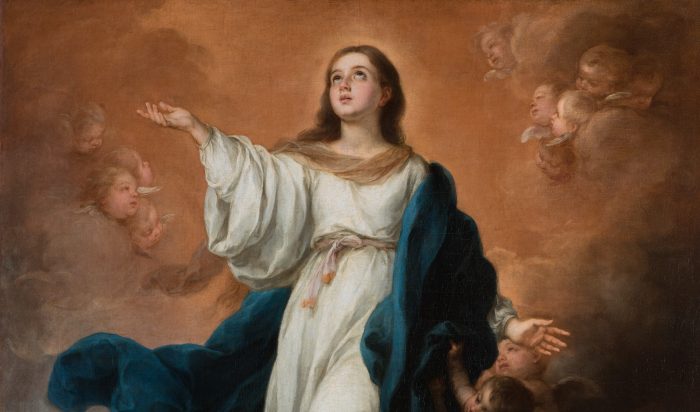 without any physical involvement. In this sense Jesus could not have inherited the “curse of Adam” since he had no human father, and the chain was broken. Mary herself had broken the “curse of Eve” by virtue of the act of conceiving and birthing the Second Adam, and it is in this sense that Jesus was born without original sin, since he did not inherit the Y-Chromosome which can only be given from a biological father. Likewise, he inherited a sinless X-Chromosome from Mary, the New Eve. Biologically, males always inherit their X-Chromosome from their mother. The X-Chromosome is three times larger than the Y-Chromosome (containing about 900 genes, while the Y-Chromosome has about 55 genes). Females have two X-Chromosomes in every cell, and do not inherit a Y-Chromosome. This may explain the Incarnation of Christ as a male if Augustine's theory of concupiscence is correct, since the reintegration of the elemental body would require both the male and female forms to be repaired, and this the Incarnation achieved. I speak here of the totality of humanity, because we are physical beings and not only spirits locked in elemental matter. Our physical form required deliverance too, and the model for this is the risen Christ, the perfected Second Adam born of the New Eve, born of a human woman and whose humanity - both male and female - derives from her.
without any physical involvement. In this sense Jesus could not have inherited the “curse of Adam” since he had no human father, and the chain was broken. Mary herself had broken the “curse of Eve” by virtue of the act of conceiving and birthing the Second Adam, and it is in this sense that Jesus was born without original sin, since he did not inherit the Y-Chromosome which can only be given from a biological father. Likewise, he inherited a sinless X-Chromosome from Mary, the New Eve. Biologically, males always inherit their X-Chromosome from their mother. The X-Chromosome is three times larger than the Y-Chromosome (containing about 900 genes, while the Y-Chromosome has about 55 genes). Females have two X-Chromosomes in every cell, and do not inherit a Y-Chromosome. This may explain the Incarnation of Christ as a male if Augustine's theory of concupiscence is correct, since the reintegration of the elemental body would require both the male and female forms to be repaired, and this the Incarnation achieved. I speak here of the totality of humanity, because we are physical beings and not only spirits locked in elemental matter. Our physical form required deliverance too, and the model for this is the risen Christ, the perfected Second Adam born of the New Eve, born of a human woman and whose humanity - both male and female - derives from her.
A body thus formed could only undergo a very brief reintegration, as we see following Jesus' crucifixion, since having been buried with his material body he was resurrected on the third day with a glorious and incorruptible physical form. He had all the appearance of ordinary matter, since he drank and ate after his resurrection with his disciples and made himself palpable to the touch of one of them. Yet he was also immaterial, and of a very different kind of nature from the body he had prior to the resurrection, since it was rapidly transported to different and distant places, such as appearing among the disciples in closed rooms then disappearing suddenly. Thus, Christ is the true image of the nature of the first body of man in his original state of glory and innocence. He was born with a sensitive and material body like that of which Adam was clothed after his crime, in order to purify humanity of the defilement contracted in the material body, opposed to our true nature, and so as to advance our bodily reintegration and spiritual reconciliation. This was the moment when the incarnating Logos broke the bonds that held him in the womb of Mary, and which repeats the first appearance of Adam on the Earth’s surface. The period of gestation was nine months, and it is hardly a coincidence that Christ died in his thirty-third year, since the action of three multiplied by three is nine, the number of incarnating man.
The so-called curse pronounced on Eve by God was not capricious. It merely stated the consequences of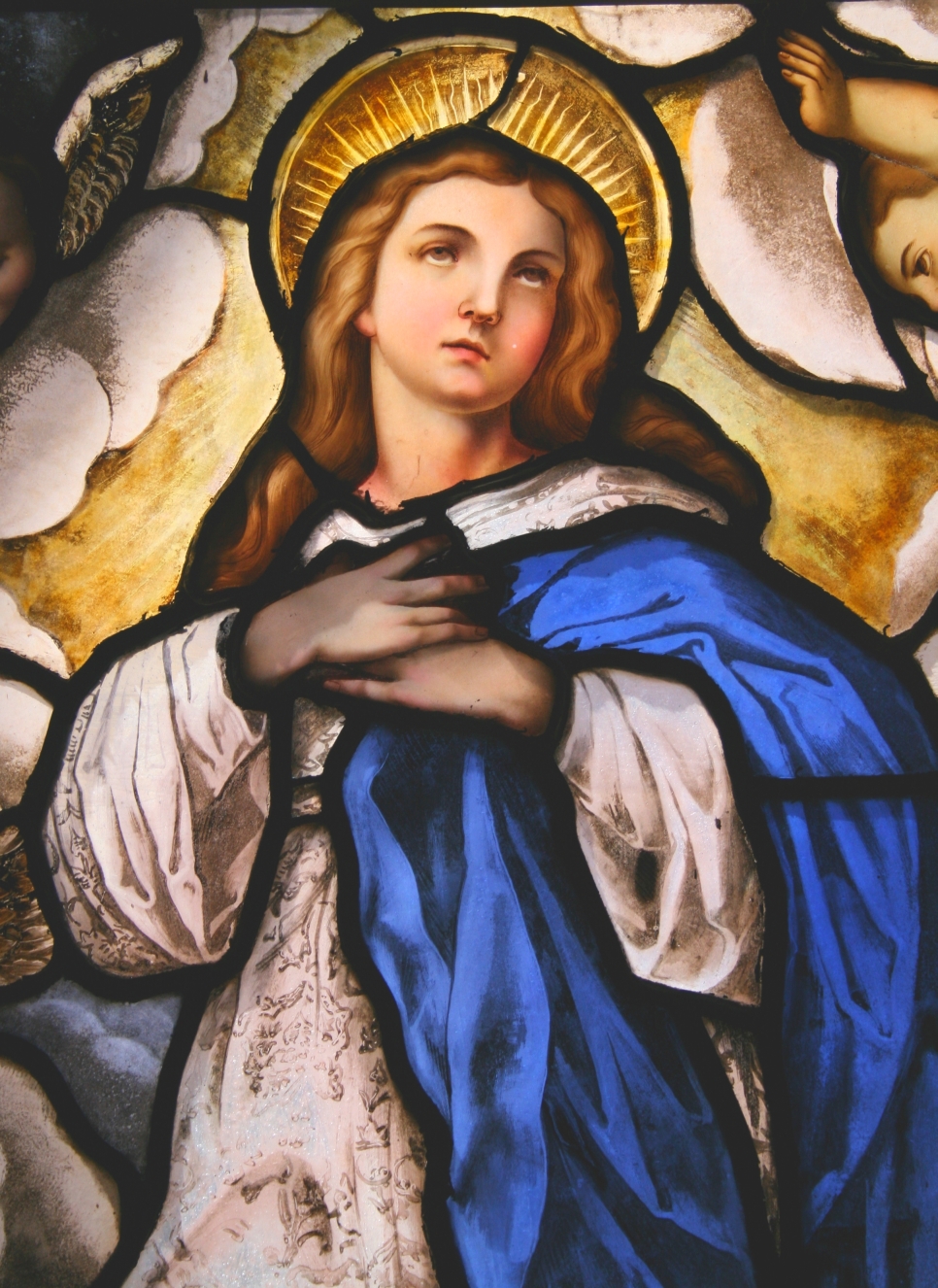 her estrangement from him, and the result of ceasing to be a glorified spiritual being through entry into the baser, elemental creation. The consequence for Eve was sexual inequality and the pain of childbirth, but this was not God's will. Thus began the long story of anxiety caused by suffering - not as a curse or punishment, but as karmic consequence:
her estrangement from him, and the result of ceasing to be a glorified spiritual being through entry into the baser, elemental creation. The consequence for Eve was sexual inequality and the pain of childbirth, but this was not God's will. Thus began the long story of anxiety caused by suffering - not as a curse or punishment, but as karmic consequence:
“Unto the woman he said, I will greatly multiply thy sorrow and thy conception; in sorrow thou shalt bring forth children; and thy desire shall be to thy husband, and he shall rule over thee.” (Genesis 3:16)
Thus we see in practise that the children of Eve are not born into sin, but we are born into a karmic state of being, and Mary changed the inheritance of Eve’s negative karma into a blessing. The Christian doctrine of the immaculate conception of Mary evolved from the time of the early Christian apologists, undergoing further formulation in the Middle Ages through to codification in the Papal bull Ineffabilis Deus of 1854. In truth, the doctrine predates the bull by many, many centuries, since the very earliest Christians – Jews – perceived the woman chosen to be the mother of Christ as beholding a sanctified state required to raise and instruct her son, and which finds reflection in the Advent narratives of the Gospels. As John Henry Newman once observed, Christ could have descended from heaven; or he might have taken a body “from the ground” like Adam; but he chose incarnation by a human woman to be just like other men. The reason is simple enough: to demonstrate that our selfish gene can be changed by a transmutative reintegration that commences – but does not find completion – in this life.
It is taught that Mary was a “perpetual virgin.” That is to say, she was a virgin before, during and after the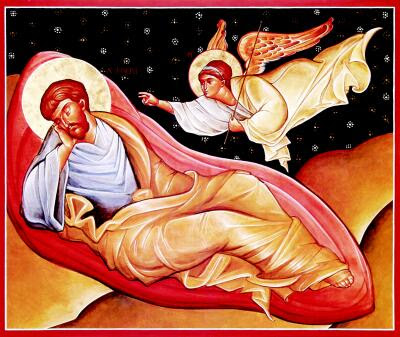 birth of Jesus. This is not as farfetched as it appears. Such births are common in certain species of animals where the evolutionary division of sex has not occurred, and for whatever reason nature has regarded asexual reproduction to be the better fit. Such is the case with certain animals in the fish and reptile families. There are also, it must be understood, pagan legends of human-divine hybrid virgin births long before Christianity. In The Lessons of Lyons we read that the seed of the body of Christ was in Mary from the moment of his conception, and was only reacted upon by of the apparition of the angel Gabriel. This was the “liaison” or moment of conception wherein the Intellect and Mind of the Logos or Son of God became conjoined with the human intellect, mind and body of the human cells in Mary that would produce the foetus. This is the point where in the Christian tradition the Holy Spirit “overshadowed” her.
birth of Jesus. This is not as farfetched as it appears. Such births are common in certain species of animals where the evolutionary division of sex has not occurred, and for whatever reason nature has regarded asexual reproduction to be the better fit. Such is the case with certain animals in the fish and reptile families. There are also, it must be understood, pagan legends of human-divine hybrid virgin births long before Christianity. In The Lessons of Lyons we read that the seed of the body of Christ was in Mary from the moment of his conception, and was only reacted upon by of the apparition of the angel Gabriel. This was the “liaison” or moment of conception wherein the Intellect and Mind of the Logos or Son of God became conjoined with the human intellect, mind and body of the human cells in Mary that would produce the foetus. This is the point where in the Christian tradition the Holy Spirit “overshadowed” her.
Ah, but say many, Jesus had brothers and sisters and his mother could not have been a perpetual virgin. The response to this is that there is nothing in the scriptures or tradition that indicates the age of Joseph, or of his other children. It is possible – indeed, on reflection, it is quite likely – that Joseph was older than Mary, and a widower given charge of her in the role of a guardian through the protection afforded by marriage. He may well have had children before he met Mary. This would also explain why Joseph felt disgraced by Mary for they were not yet married, until the dream of revelation he received from Gabriel "to not be afraid" (not be be anxious) to take Mary as his wife, because she had conceived by the Holy Spirit.
![]() This finds further credence in the fact that, at his death, Jesus passed care of his mother to his dearest friend, St. John. Why do this if Mary had natural children, such as St. James, the brother of the Lord, to look out for her? The identity of this John, the beloved Disciple, is unclear. Tradition has it that he is the Apostle John, the son of Zebedee, and one of the first followers of Christ. However, he might not be. We know that Jesus loved and cared deeply for his friend Eleazer (Lazarus) of Bethany, and that following Lazarus’s resurrection he was re-named John. Why would Jesus do this? Only Simon-Peter was given the distinct privilege of being re-named by Jesus, and yet here he was re-naming the raised Lazarus as John – and when there was already another John in his circle of Disciples. One answer may be that it is Lazarus who is the Beloved Disciple. If so, then we have Lazarus-John paired with Mary as if mother and son by Jesus, which is to say we have the Second Eve cared for by the highest initiate who is the living augur of the coming general resurrection of the dead. It is he who shall live to see Christ’s Second Coming.
This finds further credence in the fact that, at his death, Jesus passed care of his mother to his dearest friend, St. John. Why do this if Mary had natural children, such as St. James, the brother of the Lord, to look out for her? The identity of this John, the beloved Disciple, is unclear. Tradition has it that he is the Apostle John, the son of Zebedee, and one of the first followers of Christ. However, he might not be. We know that Jesus loved and cared deeply for his friend Eleazer (Lazarus) of Bethany, and that following Lazarus’s resurrection he was re-named John. Why would Jesus do this? Only Simon-Peter was given the distinct privilege of being re-named by Jesus, and yet here he was re-naming the raised Lazarus as John – and when there was already another John in his circle of Disciples. One answer may be that it is Lazarus who is the Beloved Disciple. If so, then we have Lazarus-John paired with Mary as if mother and son by Jesus, which is to say we have the Second Eve cared for by the highest initiate who is the living augur of the coming general resurrection of the dead. It is he who shall live to see Christ’s Second Coming.
This makes perfect sense if Lazarus-John is somehow made immortal by virtue of his resurrection following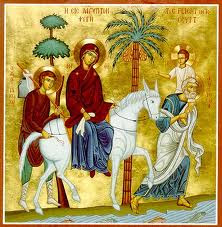 no less than four days in death – since we then have a restoration of the form of Adam in the first fully reconciled “ordinary” human being accompanied by the sinless Second Eve. Harmony, balance and positive karmic energies are restored, and which then help keep our general anxieties about the future and what lies beyond death in check. That Mary represents the human mind and our communal spirit conjoined forever with the Divinity in Christ there can be no doubt. That is her mission as the Queen of Heaven. Here, on Earth, the continuing ministry of the Beloved Disciple as the immortal spirit of Christian Rosenkreutz is developing the evolution of the western mind or branch of humanity, and is a reminder that the ongoing transformation of our species from an animal concerned only with material needs is in progress, and that our suffering and our anxiety will someday be alleviated through our reintegration with the perfected group soul that is Adam.
no less than four days in death – since we then have a restoration of the form of Adam in the first fully reconciled “ordinary” human being accompanied by the sinless Second Eve. Harmony, balance and positive karmic energies are restored, and which then help keep our general anxieties about the future and what lies beyond death in check. That Mary represents the human mind and our communal spirit conjoined forever with the Divinity in Christ there can be no doubt. That is her mission as the Queen of Heaven. Here, on Earth, the continuing ministry of the Beloved Disciple as the immortal spirit of Christian Rosenkreutz is developing the evolution of the western mind or branch of humanity, and is a reminder that the ongoing transformation of our species from an animal concerned only with material needs is in progress, and that our suffering and our anxiety will someday be alleviated through our reintegration with the perfected group soul that is Adam.
Returning then to the opening paragraph of this article, it is clear that the selfish gene is responsible for anxiety and depression. Those that repudiate that life of toil and suffering are exercising their free will in doing so, and there is no sin to be found in that. However, there is no escape. The human spirit is immortal and return it must until sufficient progress is made to break the cycle of ever repeating lives until the point is reached where the spirit within cries "enough!" and embraces the release of absolution offered by God through his Son. Our task is to become like Mary: she who first walked the path we must all take.
This article is the copyright (c) of M.R. Osborne, 2022






